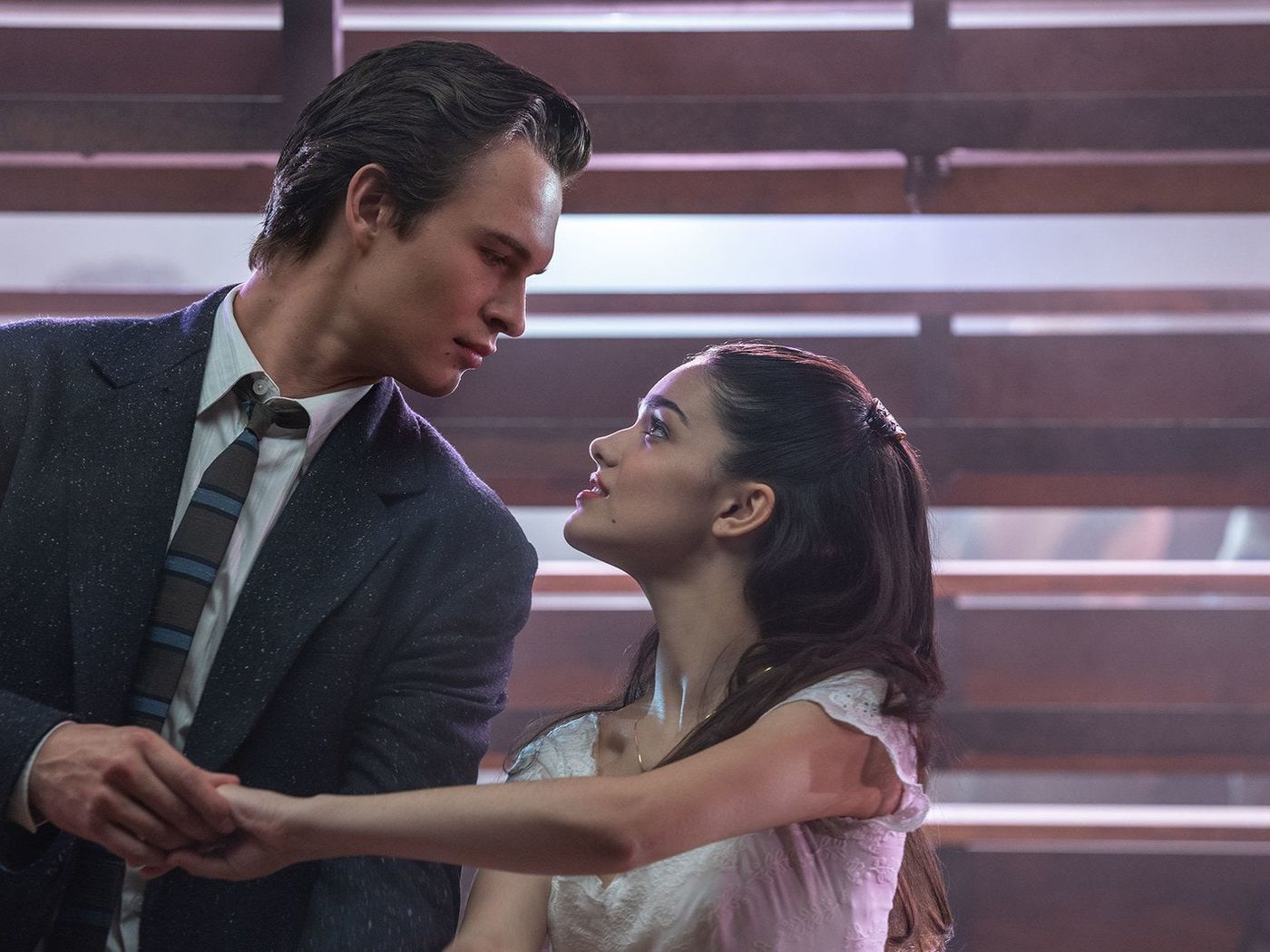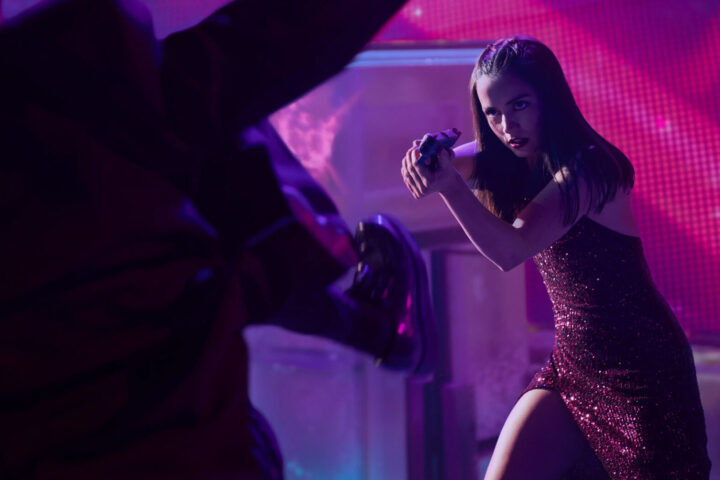It may not have been necessary, but Steven Spielberg’s shiny new version of West Side Story has enough going for it to merit a recommendation – it’s a colorful, energetic update with a few new touches and an appealing cast of talented newcomers (and one notable legend). The Bernstein and Sondheim music, probably the most beloved in all of American musical theater, remains intact and sounds great through new Dolby Cinema technology.
Mounting a superbly crafted new adaptation penned by longtime screenwriting partner Tony Kushner, Spielberg contextualizes West Side Story’s simple, star-crossed romance against a backdrop of urban gentrification, the famous Sharks and Jets still at war, this time in a neighborhood under rapid demolition and change (they do, however, still indulge in soaring balletic moves and snap-snapping fingers – what’s old is new again). Picture opens with a crane shot of half-destroyed city blocks and a promise of a future Upper West set to replace “the last of the can’t make it Caucasians” and their Puerto Rican rivals.
The story itself hasn’t changed (much) either, with a few pronounced updates. But that story – a gang turf-set Romeo and Juliet on Manhattan’s Upper West side circa 1957 – has never been West Side Story’s claim to fame. It has always been about the music. That reduction, in my view, makes it less engaging than both In the Heights and Tick, Tick…Boom!, a pair of 2021 movie musicals substantially more satisfying in the drama department.
We all know the story – the white underclass Jets and the Puerto Rican Sharks are mortal enemies, an age-old urban beef piqued by racial tensions. Hotheaded Bernardo (Tony winner David Alvarez) rules the Sharks, and flinty Riff (Mike Faist, of Broadway’s Dear Evan Hansen) is the Jets’ front man.
Into the mix come Bernardo’s younger sister, Maria (Rachel Zegler) and Riff’s best buddy, Tony (Ansel Elgort), just back from jail and determined to stay away from both the Jets and trouble. In the film’s most exciting performance, the exhilarating Ariana DeBose is a headstrong Anita, Bernardo’s live-in girl, a budding dress designer with a fierce independence. Her vivacious, street party rendition of America is a notable highlight.
Anita may be the best loved character in West Side Story due in no small part Rita Moreno’s indelible, Oscar winning performance in the 1961 original. As for eighty-nine-year-old Moreno, she’s back here in a new role as Valentina, the drugstore owner and widow of Doc (who ran the shop in the original 1961 film) who is also Tony’s boss and support system. She delivers a terrific rendition of a newly configured Somewhere, showing the kids how it’s done. Great stuff.
Yet music aside, West Side Story has never been that deep, and while its themes of racial animosity that leads to tragedy are quite obviously as current today as ever, the love story still feels pat, the grittiness of the gang rivalry here eclipsing the young romance. That romance, a take-it-on-faith love at first sight proposition, requires a leap of faith and has always been on the wan side. As West Side Story’s beating hearts, Zegler and Elgort offer perfunctory chemistry; the real heat here is with Anita, Valentina and the supporting cast.
In a new touch, Kushner and Spielberg have chosen to convey significant portions of the film’s dialogue in Spanish without subtitle translation, in an effort to avoid granting parity to English over Spanish. As the cast moves effortlessly back and forth between the two, nothing seems lost in translation.
The final hour of the picture, beginning with the gang rumble and ending with the musical’s famous tragedy, is sensationally directed and performed. The same could be said, really, about all of the song and dance numbers, particularly the early gymnasium number which makes stunning use of the frame – feet, faces and bodies in and out, furiously choreographed by Justin Peck, exploding in color and vitality. All of the songs, truly, are impeccably shot, cut and performed by young stars who have the Broadway or theatrical acumens to make them soar (though personally I’d jettison Gee Officer Krupke, insightful as always but too broadly theatrical in this incarnation).
As Maria, newcomer Rachel Zegler has a fine voice and solid emoting even if she often registers better as spirited kid sister than ravishing romantic lead. The story does her no favors in its simplicity as she is far from complex – one could say the same about Juliet herself – and the character requirements of West Side Story are few; she’s a romantic vision, sure, but little more.
Elgort, with leading man looks, has a glamour that perhaps betrays Tony’s milieu; he’s more movie star than believably reformed hood. Both stars are talented in service of a limited dramatic scope though unlike predecessors Natalie Wood and Richard Beymer, they have the musical chops to actually sing the songs. Elgort gets a late picture moment with Moreno that is unabashedly large and could perhaps earn Moreno another Oscar nod.
West Side Story, with a budget of more than $100 million (Robert Wise’s original came in at $41.5), is well mounted, glossy, big screen entertainment, and should be seen that way. Just know that it’s essentially the same tragic teen affair it’s always been – undeniably mounted with care and imagination by the greatest populist filmmaker of all time – but it’s still West Side Story.
3 stars.



